"Telecommunication over Decades" Special Exhibition
Store of Our Childhood
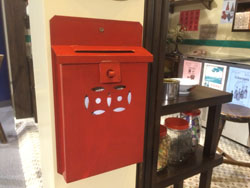
Supermarket was uncommon in the 60's and 70's of last century. People went to buy fresh food from the market every day. Stores were like supermarkets today, selling groceries and even snacks. Going back to the era when telephone was still uncommon, visitors can turn on the radio at "Tung Kei" store to learn about how life was in those days. They can also have a peep of the pricing of goods at that time. As telephone was still not yet common for every household, people usually sent letters or telegram for distant communication. You may read the letters in the mailbox at the door of "Tung Kei"; or take a look of the telegram hung inside the store. If someone had to make a phone call, stores like "Tung Kei" was one of the most convenient places to ask for telephone usage. Let us ask for using the telephone at the store, and look up the notebook beside it!
Mailbox
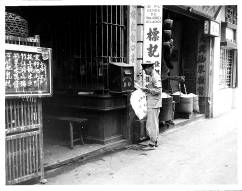
Before the 60's in the last century, telephone was not popular in Macao. Postal service is the main channel of communication for local residents. Surface mail was used for personal mails, government letters, commercial correspondence and bills, etc. Air mail, registered mail and telegram were not commonly used due to their high charges.
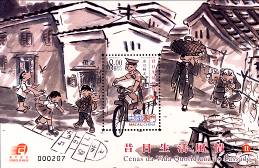
In the past, not everyone had the opportunity to receive formal education. Hence, "se seon lou" or letter writers were very popular. Maids from other provinces, people going to markets and other residents would come for letter writing. Families and stores usually put metal mailboxes painted in red outside their doors for the postmen to deliver mails. Most of the time, the postmen would park their bicycles at the street corner, and then distribute the mails along the street.
From the late 60's to early 70's, a surface letter of 20 grams required postage of 10 cents. If it was overweight, 5 cents for each additional 20 grams or its fraction would be charged. The postage of a surface letter to the mainland or Hong Kong was 20 cents. 10 cents was charged for overweight mail. For a registered letter, additional 10 cents would be charged for local mails and 30 cents for mails to Hong Kong. Therefore, the majority of private mails, government letters, applications and even bills were sent by surface mails.
Telegram
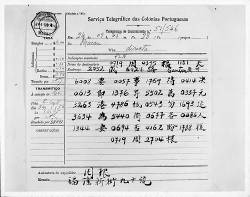
In the 60's, telegram was the fastest way of external communication for emergency. However sending telegram was rather costly. The sender first had to write his brief message on the telegram form. If it was in Chinese, it had to be translated into the telegraph code before the telegraph operator could send it out. In the same way, the telegram delivered by the postmen to the recipient had to be decoded into Chinese.
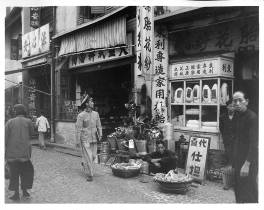
At that time, local residents who wanted to send telegram had to go to the Post, Telegraph & Telephone Office (CTT) at the Senado Square. The telegraph counter operated for 24 hours a day. Hence people could go there anytime. To send the telegram, the sender first had to write his message on the telegram form. If the message was in Chinese, it must be translated into telegraph codes according to the code table, or pay for the translation service. Then the coded message would be sent by the trained telegraph operator using Morse Code to the destination post & telegraph authority. It would then be delivered by the postmen to the recipient.
Telegram was charged according to the number of words (or characters). In the 60's, telegram sent from Macao to Taipa or Coloane was charged at 36 cents for every 12 words. Telegram for sending overseas would be more costly. For example, telegram sent to Portugal was charged at MOP3.65 per word. In order to minimize the charges, the sender would shorten the message as much as possible. In 1964, a total of over 21,000 telegrams were sent out, and over 34,000 telegrams were received. Telegram had largely supplemented letter correspondence due to its fast delivery.
Store Telephone
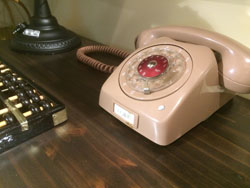
From the 60's to mid 70's, telephone usage gradually increased. However, it was still expensive and complicated to apply for a telephone. Moreover, the coverage of underground cables was not sufficient to provide full service. If people wanted to make telephone calls, they would usually borrow it from their neighbors or shops nearby. Some people would join together and apply for one telephone. Then one family would be the operator to call for others to answer the phone calls.

In 1887, telephone that worked on the magnetic principle appeared in Macao. In 1927, the Post Office took over the operation of telephone and wireless transmission service in Macao. In 1929, the "Siemens" Step-by-Step Telephone Exchange was in operation. Since then, telephone service in Macao came to a new development stage. In 1967, telephones were used by government departments, banks, hospitals, business services, etc. However, residential telephone was still not popular. At that time, the quarterly charge for each residential telephone was MOP40.50 and MOP63.00 for commercial telephones. In those days, the monthly salary of a primary teacher was only about MOP200.00, and one bowl of plain congee or a deep-fried roll by the street hawkers was only 5 cents.
In 1967, the usage of public telephone call was charged at 10 cents for every 5 minutes. Private telephone call was limited to 15 minutes each time. The telephone used by residents, organizations and offices was limited to 900 times per month; restaurants and hotels to 1800 times; and banks to 3000 times. Additional charge for exceeded usage was 10 cents each time. Since it was costly to apply for a telephone, some people would jointly apply for one and had it installed in the shop on the ground floor. People who needed to use it had to go to the shop. The shop also had to call for the recipient upstairs to answer the telephone. Finally, in 1977, as printed on the telephone directory, the telephone subscribers were allowed to charge the phone users MOP0.30 each time.
International Call
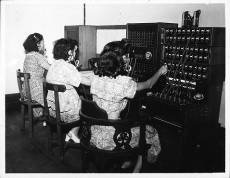
From the 60's to 70's, telephone calls generally worked within the city. If people wanted to use their phone to make international calls, they had to apply for such service at the CTT. Otherwise, they had to go to the CTT and make the call through the operator, or set up a phone call with the called party at the specified time. International calls were very expensive at that time. Unless it was for emergency, people normally would not be willing to spend on international calls.
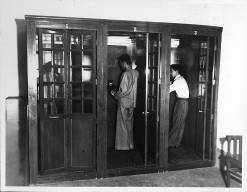
In the 60's, making international calls was a "big thing". Normally telephone calls were made within the city. To apply for making international calls, the user had to pay for a deposit of at least MOP60.00. After the CTT had approved this kind of "Credit Phone", the user will be given a confidential number. When the user called, he just had to tell the operator the number, and then the line could be connected. People who had no telephone had to go the CTT to make a long-distant call by paying cash.
At that time, long distance calls had to be connected by the operator. Apart from the telephone number, the caller could also specify who to answer the phone. If the recipient had no telephone, staff at the telephone station had to find the recipient according to the name and address provided and set another calling time. The long distance call at that time included both the connection fee and call charges. In 1967, the long distance call charges from Macao to Hong Kong for day time and night time were different. Call charge was MOP4.00 ~ 6.00. After 3 minutes, the additional charge was MOP1.40 ~ 2.00 per minute (time less than 1 minute would also be counted as 1 minute). The long distance call to Guangzhou was charged at MOP6.00 for the first 3 minutes and Taiwan at MOP24.00. On the tariff, the highest charge for the first 3 minutes was a call to Portugal, which was MOP89.20!
Radio
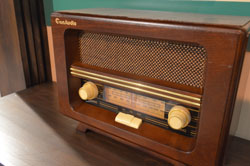
The golden age of radio broadcasting was between the 50's and the 70's. Radio Macao and Radio Vila Verde were very popular. Every family and factory workers liked to listen to the stories, Chinese opera singing, Mandarin and Cantonese pops and the song dedication programs on the radio. During typhoon seasons, children and fishermen paid most attention to the typhoon news updates on the radio. Until the mid 60's, the radio installed at shops and cafés required an annual license fee of MOP36.40 but a charge of MOP18.20 for household radio.
In the 60's, the population of Macao was only about 200,000. It was a small, quiet city without tall buildings and the bustle of tourists. This is the "Macao Street" in the impression of the old local residents. Although there were buses, taxis and rickshaws, people normally went to work and school on foot.
Since Macao is situated in the South China Sea with abundant natural resources, fishing is one of the most traditional industries of Macao. At that time, manufacturing industries were mainly firecrackers, incense and matches. The internal harbor today was the main external harbor of Macao in those days. The area nearby was the city center and the busiest part of Macao, with lots of shops, banks, cinemas, restaurants, pawn shops, casinos and hawkers. Tourists from Hong Kong liked to buy almond cakes and crabs as souvenirs back home.
I still remember that there was a grocery store located at the side of the golden district. Owing to the convenient location and heavy flow of people, business was quite good. People in the neighborhood would stop by to buy grocery items or just gossip. To provide more convenience and attract more customers, the store owner jointly installed a telephone at the store with some neighbors. Having a telephone was sensational in those days because not many people had used telephone. Everyone only sent letters for distant communication. Telegram was only used for emergency. The red mailbox at the door of store was always full of letters. Whenever the telephone rang, the store owner would cry out loudly to call for the recipient, or the neighbors would help to find him/her. Some people would even help to jot down the telephone messages in a notebook.
About CMM
Contact US
Others
Other Websites
Number of Visitors:
Last Modified Date: 10/03/2025